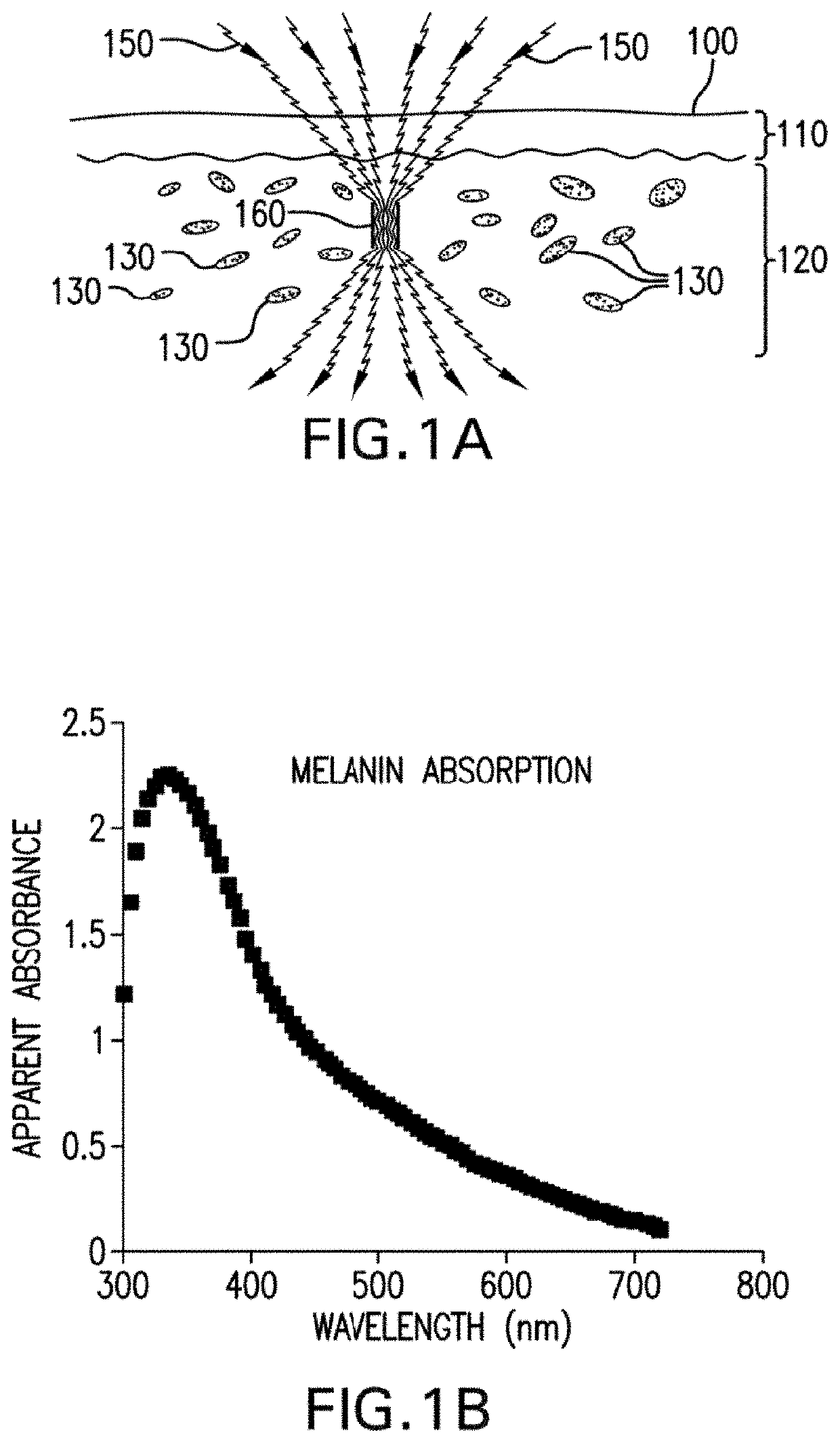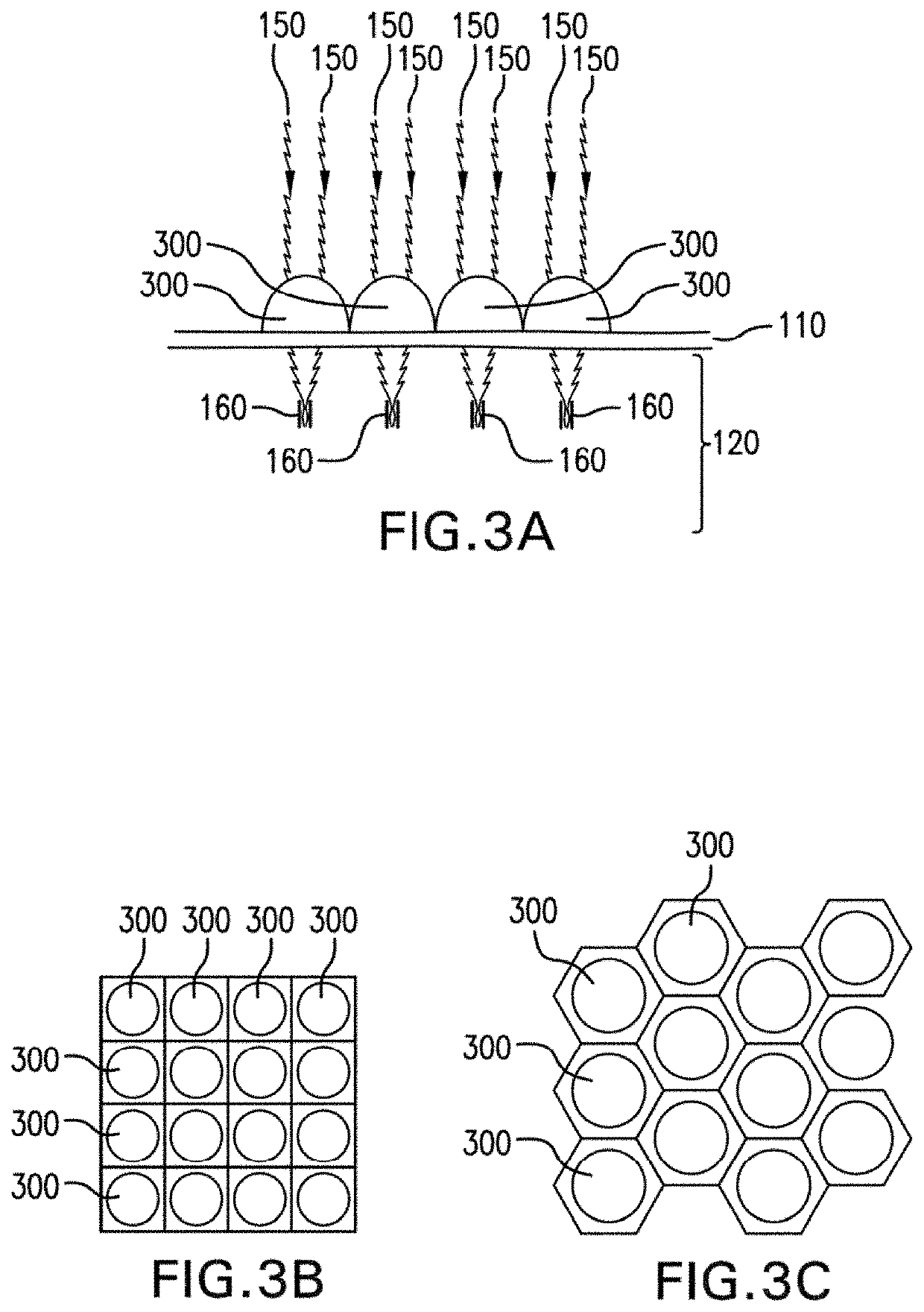Method and apparatus for treating dermal melasma
a technology of dermal melasma and treatment method, which is applied in the field of dermal melasma treatment methods and apparatuses, can solve the problems that conventional skin rejuvenation treatments such as facial peels (laser or chemical), dermabrasion, topical agents, etc., can not be effective in treating dermal melasma, and achieve the effects of facilitating selective energy absorption, lightening the appearance of the skin, and reducing the number o
- Summary
- Abstract
- Description
- Claims
- Application Information
AI Technical Summary
Benefits of technology
Problems solved by technology
Method used
Image
Examples
example
[0112]An animal study using an exemplary spot-focused laser device and model system were used to test the efficacy of treating deep melasma using optical radiation. The study was performed on a female Yorkshire pig, as described below.
[0113]First, a deep-melasma condition was simulated by tattooing the dermis using a melanin-based ink. The ink was prepared by mixing synthetic melanin at a concentration of 20 mg / mL in a 50:50 saline / glycerol solution. The resulting suspension was then agitated prior to being injected into 1 cm by 1 cm test sites on the animal subject using a standard tattoo gun. The tattooed sites were then allowed to settle over a period of a week to allow melanophages to phagocytoze the melanin granules in the dermis. The melanin left in the epidermis was substantially eliminated over this time period through natural bodily processes.
[0114]An exemplary biopsy image from a tattooed site that was allowed to settle as described herein, is shown in FIG. 5. The tissue s...
PUM
 Login to View More
Login to View More Abstract
Description
Claims
Application Information
 Login to View More
Login to View More - R&D
- Intellectual Property
- Life Sciences
- Materials
- Tech Scout
- Unparalleled Data Quality
- Higher Quality Content
- 60% Fewer Hallucinations
Browse by: Latest US Patents, China's latest patents, Technical Efficacy Thesaurus, Application Domain, Technology Topic, Popular Technical Reports.
© 2025 PatSnap. All rights reserved.Legal|Privacy policy|Modern Slavery Act Transparency Statement|Sitemap|About US| Contact US: help@patsnap.com



